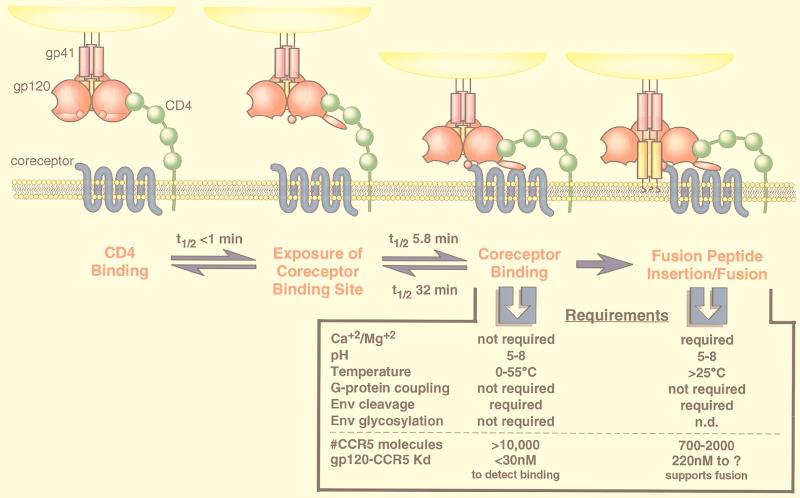FIG. 10.
Requirements and kinetics of HIV fusion events. HIV entry begins when the gp120 subunit of Env contacts CD4 on the surface of a cell (far left). CD4 binding induces a rapid and reversible conformational change in gp120 that exposes a previously hidden coreceptor binding site. Binding to a coreceptor brings the virus in close proximity to the cellular membrane and induces a conformational change in the gp41 subunit of Env. The change in gp41 exposes the fusion peptide of Env that mediates mixing of the cellular and viral membranes for viral entry (far right). The kinetics of gp120 binding and conformational change, as measured in this study, are indicated. The kinetics of JRFL gp120 binding to sCD4 are described in detail elsewhere (67). The requirements of gp120-CCR5 binding and Env-membrane fusion are compared. We note that the parameter “#CCR5 molecules” is a comparison of the sensitivity of different assays (binding versus infection). The parameter “gp120-CCR5 Kd” indicates what gp120-CCR5 affinity is needed to detect binding and what gp120-CCR5 affinity is still consistent with Env-coreceptor activity. Both parameters are a function of the form of Env used in each assay (e.g., monomeric gp120 and oligomeric Env) and may change with subsequent improvements in assay sensitivity and methodology. The requirement of Env glycosylation for membrane fusion has not been conclusively demonstrated by using enzymatic deglycosylation. n.d., not determined. The requirements of gp120 binding are described in this report and by Baik et al. (1). The requirements of Env-mediated fusion have been described elsewhere (2, 11, 21, 35, 47, 57).

